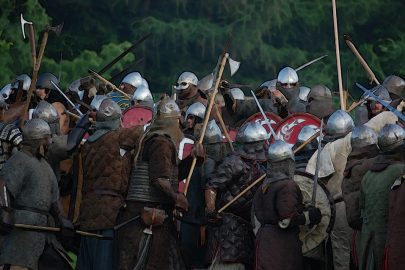How exactly the Vikings and their Iron Age ancestors made their war shields has always been a mystery, but a new study explains this in detail and shines light onto a traditionally shadowy aspect of ancient Nordic warcraft and weaponry.
It is well-known that the thin wooden boards in shield constructions of the Iron Age and Viking Age in Northern Europe were reinforced with animal skin and would have been useless without this component. The skin was arguably the most important part of the construction and gave the shield its strength and structural integrity.
also read
When the Vikings met the Greeks (photos)
A modern day “Viking” boards an Ancient Greek Trireme warship (video)
However, prehistoric skin products were the equivalent of today’s plastics and could vary considerably in strength and other properties, depending upon what animal species were used and how the skin had been treated. This aspect of shields has never been successfully analyzed and thought impossible to determine until now. Using new analytical methods, the question of what type of skin products were used has finally been solved in this new study, giving us a more-or-less complete understanding of what such shields looked like.
see the full paper here
source combatarchaeology.org
Ask me anything
Explore related questions





